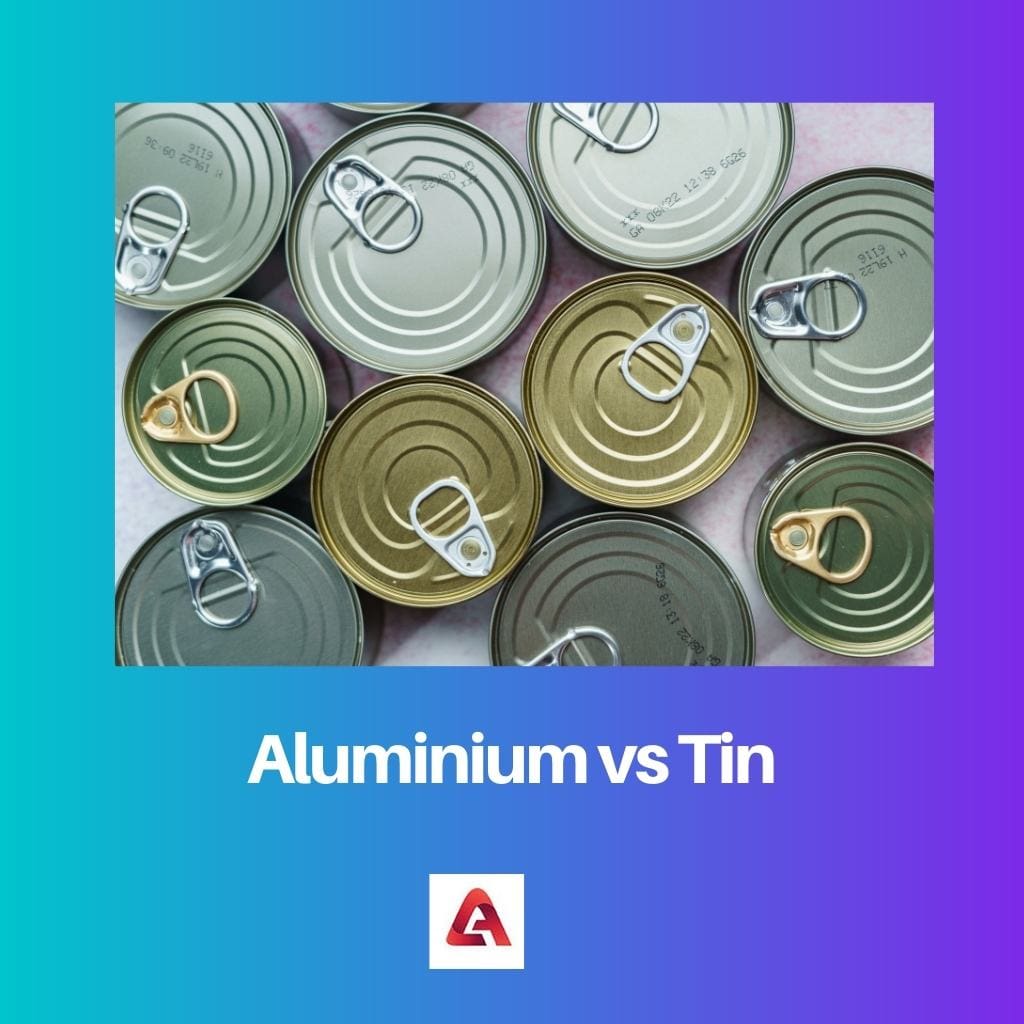Aluminium and tin are the two elements of the periodic table. Both of them are metals and have various properties.
Based on these different physical and chemical properties, these elements are further differentiated. They have some fair use in several types of industries. They also form many alloys that additionally have their benefits.
Key Takeaways
- Aluminium and tin are metallic elements widely used in various industries.
- Aluminium is lightweight, durable, and corrosion-resistant, while tin is malleable, ductile, and has a low melting point.
- Aluminium is commonly used in the aerospace, automotive, and construction industries, while tin is used in producing tinplate and as a coating for other metals.
Aluminium vs Tin
The difference between aluminium and tin is that aluminium is available in the earth’s crust much more tremendously than tin.
Aluminium is also much more expensive than tin. Tin was a famous metal in the earlier days. However, now aluminium is used more than the tin.

Aluminium is a p-group element with the atomic number 13, represented by the symbol “Al”. It is the most abundant metal on earth by mass and the 3rd most abundant element.
Although it is not present in its metallic form in the earth’s crust, aluminium compounds are found worldwide.
Tin is an element of the p group with atomic number 50, represented by the symbol “Sn”. It has a silvery grey colour and is a metal of group 14.
It is a very soft metal that can be cut with a little force. It is found in the igneous form of the rocks present in the earth’s crust. Tin is malleable and ductile, and it is known to be non-toxic.
Comparison Table
| Parameters of comparison | Aluminium | Tin |
|---|---|---|
| Definition | Aluminium is a metal with atomic number 13, represented by the symbol “Al”. | Tin is a metal group with the atomic number 50, represented by the symbol “Sn”. |
| Abundancy | It is known as the most abundant metal on earth by mass. | It is found in the earth’s crust at about 0.001%. |
| Uses | In aerospace, construction, utensils, electrical conductors, etc. | It is used in making jewellery and in the plating of containers. |
| Cost | More expensive than tin. | Less expensive than aluminium. |
| Conductor | Better conductor of heat and electricity than tin. | Not a very good conductor. |
What is Aluminum?
Aluminium is a p-group element with the atomic number 13, represented by the symbol “Al”. It is a metal of group 13.
It is the most abundant metal on earth by mass and the 3rd most abundant element. It has a silvery-white colour and is a lightweight metal.
Although it is not present in its metallic form in the earth’s crust, aluminium compounds are found worldwide.
It occurs in the igneous form of rocks, in the soil clay and upon the bauxite after its weathering. Bauxite is described as a mixture of hydrated aluminium oxide.
Aluminium is a soft and weak metal; hence, it is mixed with other metals with different properties to form an alloy. It has a low density and is good at resisting corrosion.
Aluminium and the alloys of aluminium are used widely in various industries like aerospace, construction, utensils, electrical conductors, etc.
Aluminium also forms different compounds with unique use in industries—for example, aluminium fluoride (AlF3), aluminium chloride (AlCl3), etc.

What is Tin?
Tin is an element of the p group with atomic number 50, represented by the symbol “Sn”. It has a silvery grey colour and is a metal of group 14.
It is a very soft metal that can be cut with a little force. It has a very famous alloy called bronze which is formed after mixing tin with copper.
Tin is found in the igneous form of rocks in the earth’s crust at about 0.001%, which is significantly less.
Tin metal is known to be malleable, ductile and has a low melting point. Due to these properties, tin is mixed with other elements to form alloys. Alloys have their specific properties and use in different industries.
Tin has two allotropes, i.e. the white form (beta) and the grey form (alpha) container. To convert the grey form into the white form, it should be heated above 13.2 degrees Celcius.
Some other metals, such as chlorine, bromine and iodine, are known to react with tin.
Tin is used in plating things made of iron to prevent corrosion; the molten form of tin is used as the base for plate-glass production.
Tin is a non-toxic metal, so it is also used to plate food containers and utensils.
Tin also has various compounds, such as stannous chloride (SnCl2) and stannous oxide (SnO).

Main Differences Between Aluminum and Tin
- Aluminium is readily available in the earth’s crust and has a much greater capacity than tin.
- The atomic number of aluminium is 13, whereas the atomic number of tin is 50.
- People have been using tin for ages. In contrast, aluminium was discovered by people a lot later than tin.
- Tin makes jewellery and plates in different containers, whereas aluminium is used in the aerospace and construction industries.
- Aluminium is much more expensive than tin, but still, aluminium is used more these days.
- Aluminium is considered to be a better conductor of heat and electricity as compared to tin.




